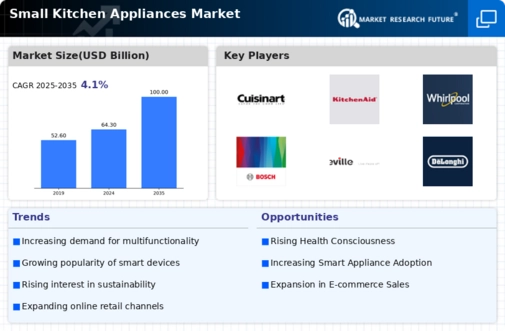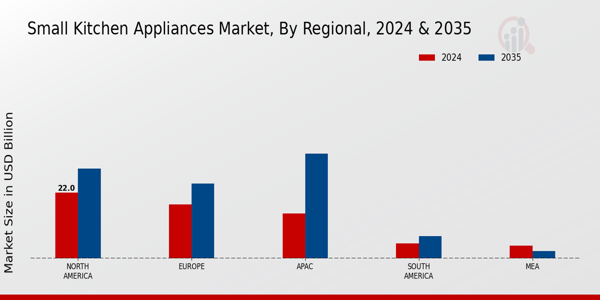E-commerce Growth
The rapid growth of e-commerce is transforming the Small Kitchen Appliances Market. With the increasing popularity of online shopping, consumers are more inclined to purchase small kitchen appliances through digital platforms. This shift not only provides convenience but also offers a wider range of products and competitive pricing. Market statistics reveal that online sales of small kitchen appliances have surged, with projections indicating a growth rate of around 10% in the coming years. As e-commerce continues to evolve, the Small Kitchen Appliances Market is poised to benefit from this trend, as more consumers turn to online channels for their kitchen appliance needs.
Rising Urbanization
The increasing trend of urbanization appears to be a pivotal driver for the Small Kitchen Appliances Market. As more individuals migrate to urban areas, the demand for compact and efficient kitchen solutions intensifies. Urban dwellers often face space constraints, leading to a preference for small kitchen appliances that offer multifunctionality without occupying excessive space. This trend is reflected in market data, which indicates that the small kitchen appliances segment is projected to grow at a compound annual growth rate of approximately 6% over the next five years. The need for convenience and efficiency in urban living environments suggests that the Small Kitchen Appliances Market will continue to thrive as urban populations expand.
Health and Wellness Trends
Health and wellness trends are becoming increasingly influential in the Small Kitchen Appliances Market. As consumers become more health-conscious, there is a growing demand for appliances that facilitate healthier cooking methods, such as air fryers and steamers. These appliances allow users to prepare meals with less oil and retain more nutrients, aligning with the global shift towards healthier eating habits. Market data indicates that the health-oriented small kitchen appliances segment is expected to grow at a rate of approximately 7% annually. This trend suggests that the Small Kitchen Appliances Market will likely expand as consumers seek products that support their health and wellness goals.
Technological Advancements
Technological advancements are significantly influencing the Small Kitchen Appliances Market. Innovations such as smart appliances, which can be controlled via mobile applications, are becoming increasingly popular among consumers. These advancements not only enhance user convenience but also improve energy efficiency, aligning with the growing consumer preference for sustainable products. Market data suggests that the smart kitchen appliance segment is expected to witness a substantial increase, with projections indicating a growth rate of around 8% annually. As technology continues to evolve, the Small Kitchen Appliances Market is likely to see a surge in demand for appliances that integrate advanced features, thereby enhancing the overall cooking experience.
Changing Consumer Lifestyles
Changing consumer lifestyles are reshaping the Small Kitchen Appliances Market. With an increasing emphasis on convenience and time-saving solutions, consumers are gravitating towards appliances that simplify meal preparation and cooking processes. The rise of dual-income households and busy professional lives has led to a heightened demand for small kitchen appliances that can deliver quick and efficient results. Market analysis indicates that the demand for food processors, blenders, and multi-cookers is on the rise, with a projected growth rate of 5% over the next few years. This shift in consumer behavior suggests that the Small Kitchen Appliances Market will continue to adapt to meet the evolving needs of modern households.


















Leave a Comment